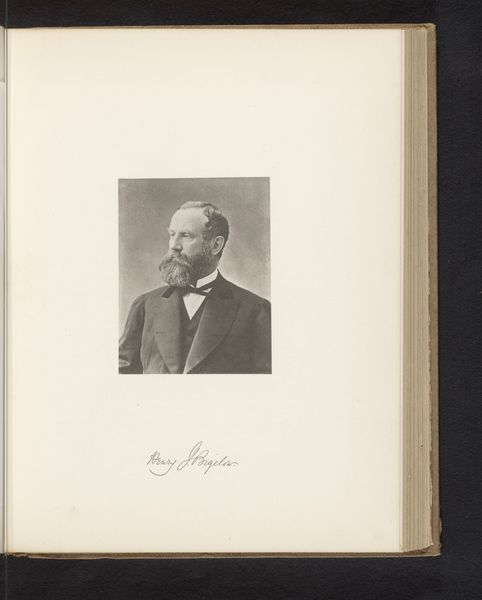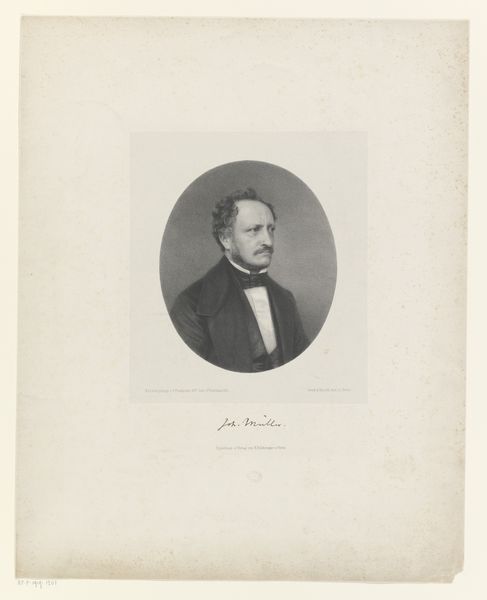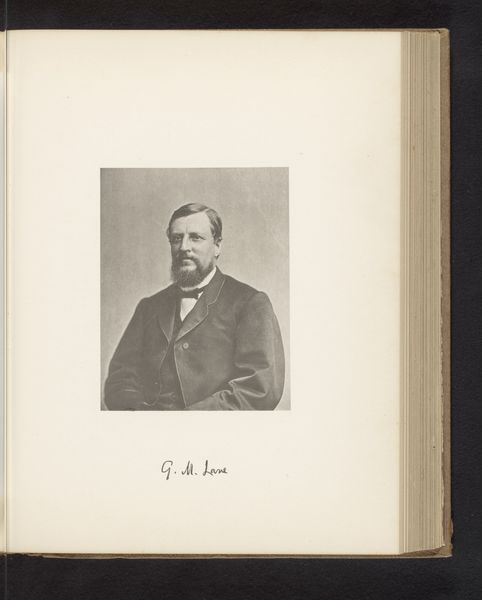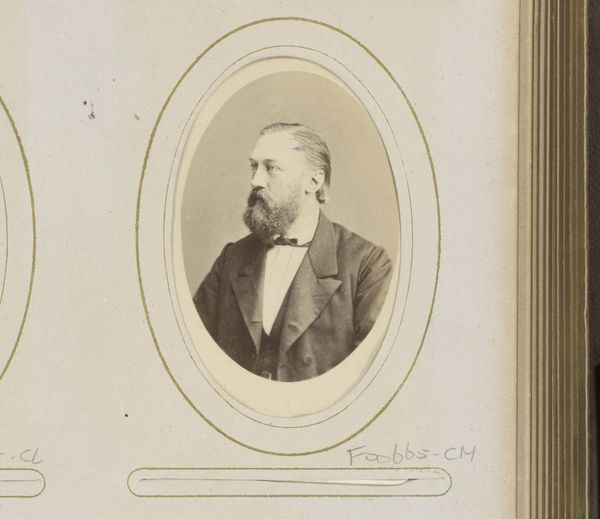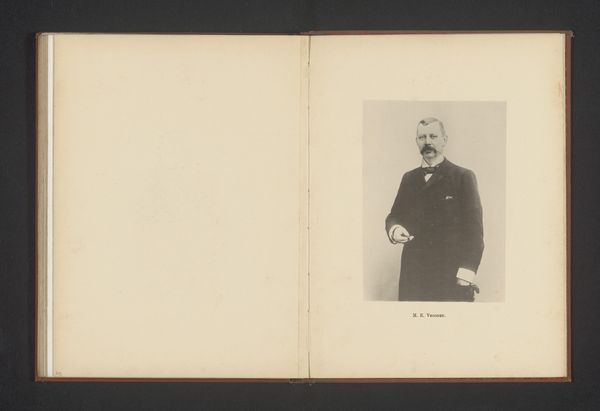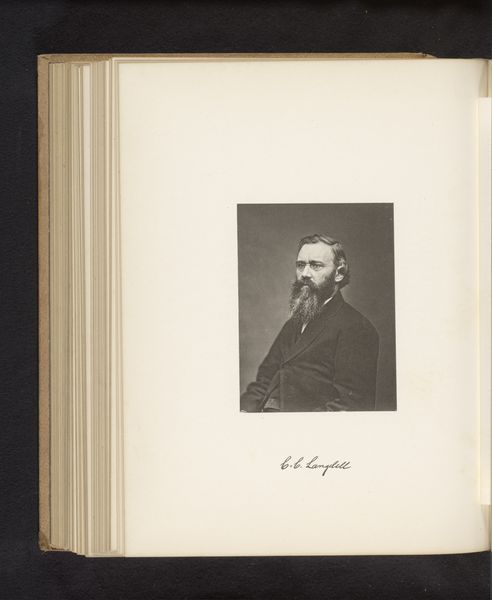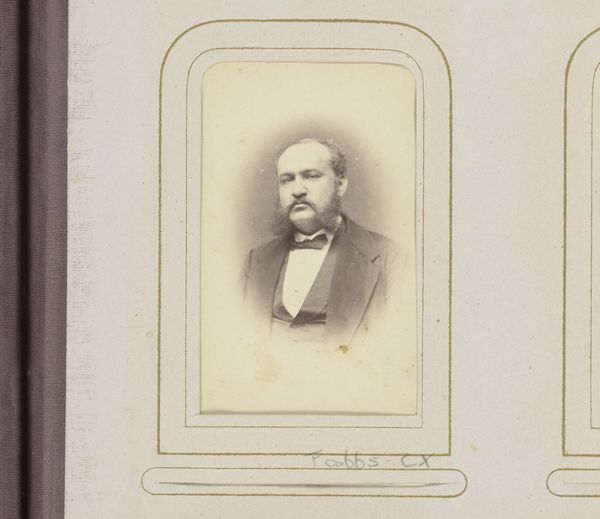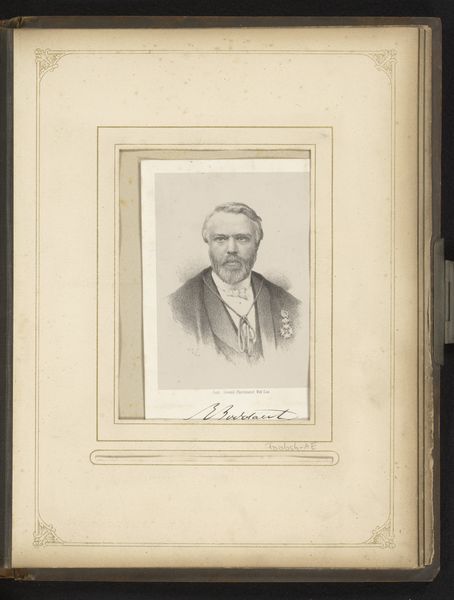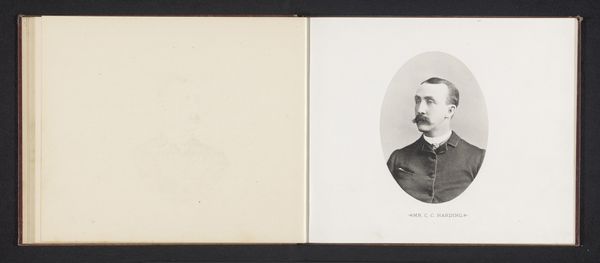
paper, photography, gelatin-silver-print
#
paper
#
photography
#
gelatin-silver-print
Dimensions: height 130 mm, width 103 mm
Copyright: Rijks Museum: Open Domain
Curator: Before us we have "Portret van Ferdinand Böcher," a gelatin-silver print from before 1875, created by an anonymous photographer. Editor: My initial impression is one of restrained dignity. The oval frame around the subject, the monochromatic tones – it speaks of formality, perhaps a posed solemnity expected of portraits in that era. Curator: Indeed, portraiture was becoming more accessible to the middle class with the rise of photography. We have to think about the social function it performed. It’s more than a representation; it's about constructing and presenting an identity. Look at how Böcher is dressed – the suit, the carefully arranged tie, the groomed mustache. He is actively participating in the construction of his own image. Editor: And what can that image tell us about the power dynamics at play? The very act of sitting for a portrait was a privilege. Photography, though becoming more common, still carried a certain weight. What social narratives was Böcher trying to convey? Was this for familial record, a statement of professional standing, or something else entirely? Curator: Excellent points. Considering intersectionality is crucial. What biases and societal norms informed the perception and representation of individuals like Böcher? I wonder about the social codes dictating what was considered 'respectable' or 'appropriate' in photographic portraiture at the time. His gaze and posture convey something of bourgeois aspiration. Editor: We can also ponder on photography as an apparatus. The act of posing, the photographer's choices of composition, lighting; it was all integral to the finished image and carried political meaning about visual rhetoric. Did this anonymous artist shape the narrative or merely translate it? The deliberate formality might be indicative of prevalent societal beliefs regarding status and character. Curator: Considering that it is mounted on paper, and it seems as though part of a collection, I can understand this need to formalize and create some permanence and historical value. I agree – Böcher has definitely chosen to inscribe himself into a certain segment of that social history. Editor: Ultimately, "Portret van Ferdinand Böcher," regardless of authorship, exists as both an artistic artifact and a testament to a society grappling with evolving notions of self-representation and power, even the political power inherent in a portrait. Curator: A compelling dialogue – the threads of identity, power, and representation woven into the very fabric of this early photograph offer endless points of connection for the contemporary viewer.
Comments
No comments
Be the first to comment and join the conversation on the ultimate creative platform.
